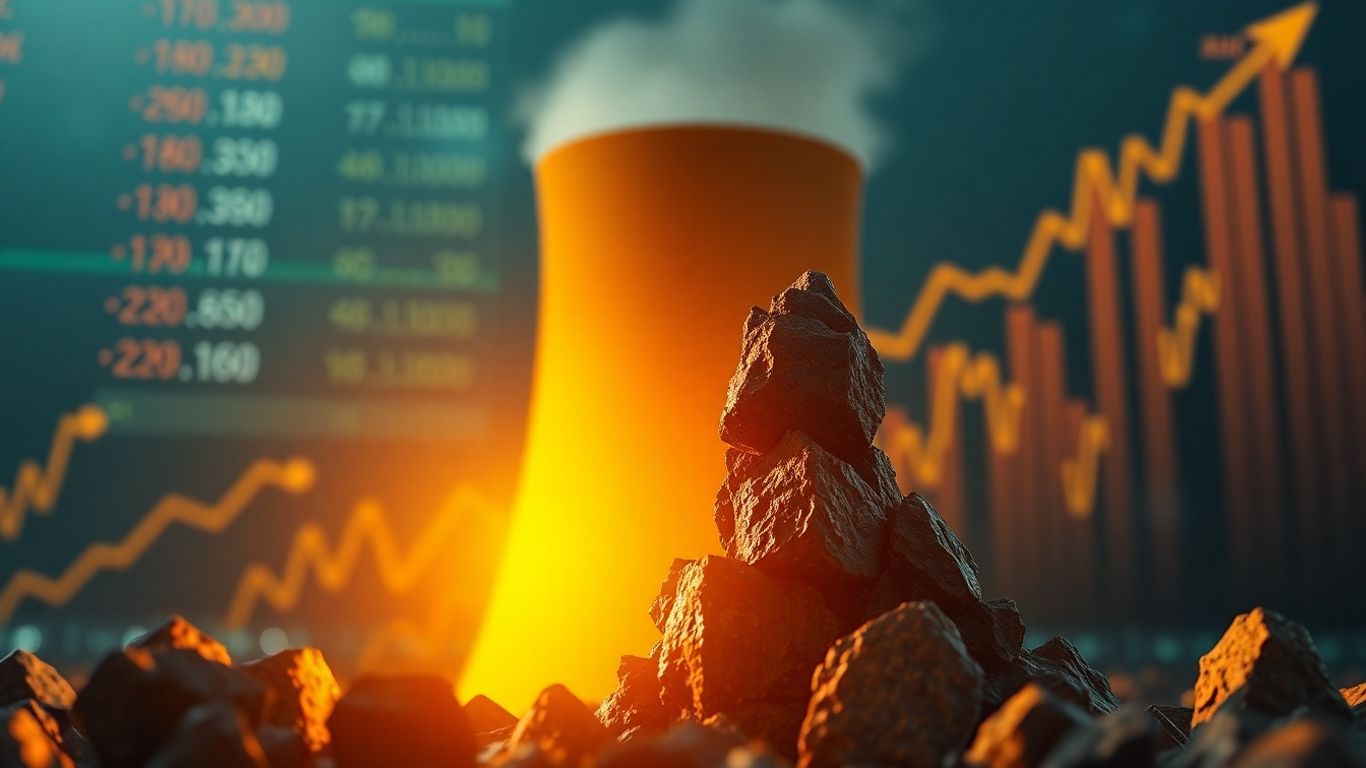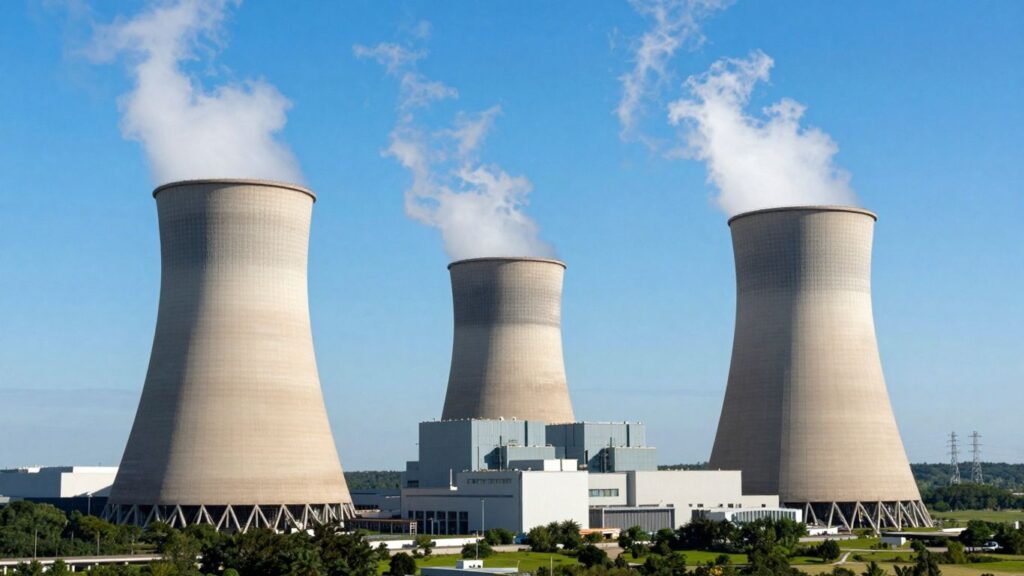The global uranium market is facing a significant shortage, a situation that is paradoxically fueling a resurgence in nuclear energy and driving up the stock prices of related companies. As demand for clean, reliable energy grows, particularly with the rise of AI-powered data centers, the U.S. is looking to bolster its domestic nuclear fuel supply chain, a sector that has long been reliant on foreign sources.
Key Takeaways
- A growing demand for nuclear energy, driven by sectors like AI and a renewed focus on energy security, is straining existing uranium supplies.
- The U.S. aims to increase its domestic nuclear fuel production capacity, but faces challenges in rebuilding its supply chain after decades of reliance on foreign imports, particularly from Russia.
- This supply-demand imbalance is leading to increased uranium prices and a positive outlook for uranium mining and nuclear energy-related stocks.
The Growing Demand for Nuclear Power
The demand for nuclear energy is on the rise, with major tech companies like Meta investing in nuclear power to meet the energy needs of their data centers. President Trump’s executive orders have also signaled a strong commitment to boosting the U.S. nuclear energy sector, aiming to quadruple its capacity within 25 years. This surge in demand, however, highlights a critical vulnerability: the U.S.’s limited domestic uranium supply.
Challenges in U.S. Uranium Production
Historically, the U.S. was a leader in nuclear fuel production, but a combination of factors, including privatization of the U.S. Enrichment Corporation and the aftermath of the Fukushima disaster, led to a decline in domestic capacity. The U.S. now imports a significant portion of its enriched uranium, with Russia holding a dominant position in the global market. Efforts to revive domestic production, such as Centrus Energy’s plans to expand its uranium enrichment facility, face hurdles including the need for substantial investment and sustained political backing.
Market Dynamics and Stock Performance
The uranium market has experienced price volatility, with spot prices rebounding after a dip earlier in the year, buoyed by geopolitical factors and renewed policy support. Long-term contract prices have remained more stable, reflecting producer discipline. Analysts are optimistic about the sector, with some upgrading price targets for companies like Cameco, citing the potential for a uranium shortage to drive prices higher. The Sprott Physical Uranium Trust’s capital raise and the performance of ETFs focused on uranium and nuclear technologies also indicate growing investor interest.
The Supply Chain Conundrum
The U.S. nuclear fuel supply chain faces a "Gordian knot" of issues, from mining and milling to conversion and enrichment. The reliance on Russian supply, which accounts for a significant portion of global enrichment capacity, creates a precarious situation. While companies like Urenco and Orano are working to increase capacity, the pace of expansion is a concern, especially if sanctions on Russia are imposed. The market is characterized by uncertainty, which inhibits the necessary investment to build out domestic capabilities. Experts estimate that the U.S. could face a crisis if Russian supply is cut off, as current inventories would only last for a limited time, and building new capacity is a lengthy process.
Future Outlook
Despite the challenges, the long-term outlook for uranium and nuclear energy appears positive. The development of advanced reactor designs, such as small modular reactors (SMRs), will require higher enrichments of uranium. Coupled with life extensions for existing plants, this points to sustained demand. However, bridging the gap between current supply and future demand will require significant investment, strategic government support, and a clear, consistent market signal to encourage the expansion of domestic nuclear fuel production capabilities.
Sources
- Nuclear fuel crisis could foil industry’s US revival, E&E News by POLITICO.
- Trump and Meta’s nuclear deals address the AI-fueled energy crisis. But can U.S. uranium supply meet
demand?<!– –>, MarketWatch. - Uranium Price Update: Q2 2025 in Review, Investing News Network.
- This TSX stock could power higher on uranium shortage, Financial Post.
- On the verge of a crisis: The U.S. nuclear fuel Gordian knot — ANS, American Nuclear Society.












